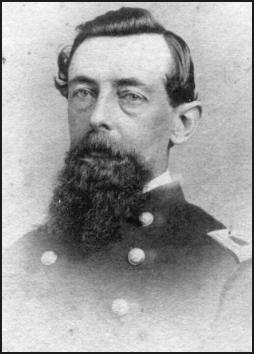George A. Cobham Jr. facts for kids
Quick facts for kids
George Ashworth Cobham Jr.
|
|
|---|---|

George Ashworth Cobham
|
|
| Born | December 5, 1825 Liverpool, England |
| Died | July 20, 1864 (aged 38) Fulton County, Georgia |
| Place of burial |
Oakland Cemetery, Warren, Pennsylvania
|
| Allegiance | United States of America Union |
| Service/ |
United States Army Union Army |
| Years of service | 1861-1864 |
| Rank | |
| Unit | 111th Pennsylvania Volunteer Infantry |
| Battles/wars | American Civil War |
George Ashworth Cobham Jr. (December 5, 1825 – July 20, 1864) was a brave soldier. He fought in the American Civil War. He led many troops and became a high-ranking officer before he died in battle.
Contents
Early Life and Family
George Cobham was born in Liverpool, England, in 1825. When he was about 11 years old, his family moved to the United States in 1836. They settled in Warren County, Pennsylvania.
George went to Allegheny College in Meadville, Pennsylvania. After college, he worked as a contractor. Around 1858, he married Annie Page. They had one son named Frederick, who was born in 1859.
Serving in the Civil War
When the Civil War began, George Cobham started gathering soldiers in Warren County. This happened after a big loss for the Union army at the First Battle of Bull Run. He led his men to a training camp in Erie, Pennsylvania.
On January 28, 1862, he became a lieutenant colonel. He was part of the 111th Pennsylvania Volunteer Infantry regiment.
Early Battles and Sickness
His regiment first served in places like Baltimore, Maryland, and Harpers Ferry. They also fought in the Battle of Cedar Mountain.
In July 1862, George Cobham became very sick with typhoid fever. He could not rejoin his regiment until October of that year. On November 7, 1862, he was promoted to colonel.
Key Battles and Leadership
Colonel Cobham led his regiment in the Battle of Chancellorsville. During this fight, he was praised for capturing the flag of an enemy group.
Later, during the Gettysburg Campaign, George Cobham took charge of a larger group of soldiers called a brigade. This happened because their usual commander was sick. He led them during the famous Battle of Gettysburg on July 2, 1863.
His brigade helped build defenses on Culp's Hill. They also helped fight off attacks on July 3, holding their ground against the Confederate army.
Moving South and Final Battle
After Gettysburg, Cobham's troops were sent to help another Union army. They fought in battles like Battle of Wauhatchie, Battle of Lookout Mountain, and Battle of Ringgold Gap.
During General Sherman's Atlanta Campaign, Colonel Cobham again took command of a brigade. This was after its commander was hurt in the Battle of Resaca.
Sadly, Colonel Cobham was killed while leading his regiment. This happened at the Battle of Peachtree Creek on July 20, 1864. He was given a special honor, a posthumous (after death) promotion to brevet brigadier general. His commander described him as a very valuable and well-liked officer.
Burial and Legacy
George Cobham was first buried in Oakland Cemetery in Warren, Pennsylvania. Later, his remains were moved to his family's burial plot. However, in 1896, he was reburied in the Grand Army of the Republic (GAR) plot at Oakland Cemetery, where he rests today.
His letters from the war to his mother and brother are kept by the Warren County, Pennsylvania Historical Society. These letters help us learn more about his life and experiences.


